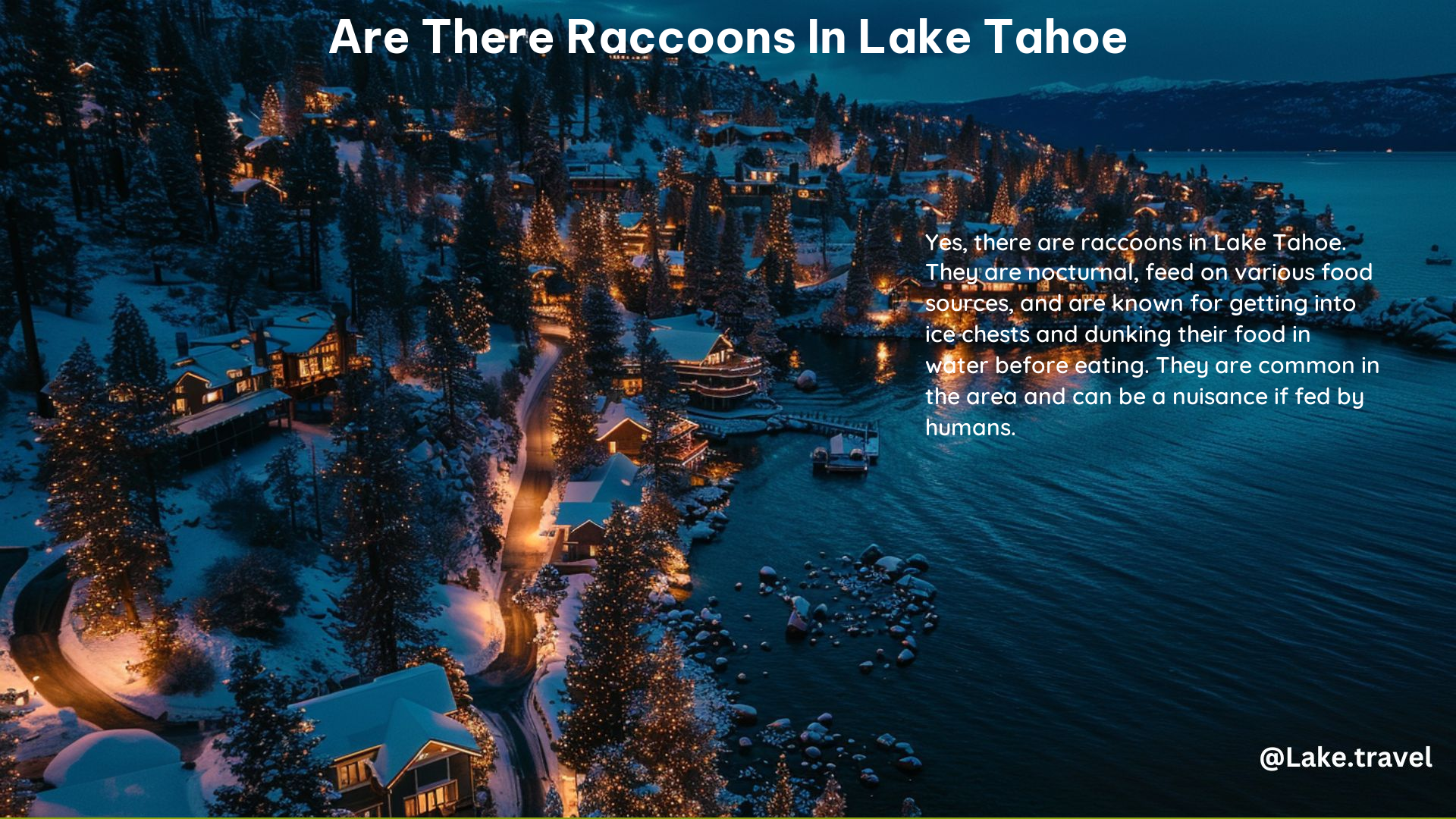Yes, there are raccoons in Lake Tahoe. Raccoons are a common sight in the Lake Tahoe region, and they play an important role in the local ecosystem. In this blog post, we’ll explore the presence of raccoons in Lake Tahoe, their behavior, and how to coexist with them responsibly.
Raccoons in Lake Tahoe: A Native Species
Raccoons are native to the Lake Tahoe area and have been a part of the region’s wildlife for centuries. These intelligent and adaptable animals are known for their distinctive black masks around their eyes and their nimble paws, which they use to manipulate their environment and search for food.
In Lake Tahoe, raccoons can be found in a variety of habitats, including forested areas, urban neighborhoods, and even near the lake itself. They are nocturnal creatures, meaning they are most active at night, and they feed on a diverse range of food sources, including:
- Fruits and berries
- Bird eggs and nestlings
- Small rodents and insects
- Garbage and pet food left out by humans
Raccoons play an important role in the ecosystem by dispersing seeds and helping to control populations of smaller animals. However, their tendency to get into human food sources and take up residence in attics and other structures can also make them a nuisance for some residents and visitors.
Raccoon Behavior and Habits in Lake Tahoe

Raccoons in Lake Tahoe are known for their adaptability and resourcefulness. They are skilled climbers and can easily navigate through trees, roofs, and other structures in search of food and shelter. Their nimble paws allow them to open latches, rummage through garbage cans, and even break into ice chests and coolers left unattended.
One of the most distinctive behaviors of raccoons in Lake Tahoe is their tendency to “wash” their food before eating it. This behavior, which is thought to be a remnant of their evolutionary past, involves dipping their food in water or rubbing it with their paws before consuming it.
Raccoons are also known for their social nature and their ability to live in close-knit family groups. In Lake Tahoe, it is not uncommon to see a mother raccoon and her young kits foraging together or playing in the trees.
Coexisting with Raccoons in Lake Tahoe
While raccoons are an integral part of the Lake Tahoe ecosystem, their presence can sometimes create challenges for residents and visitors. To coexist with raccoons responsibly, it is important to take the following precautions:
-
Secure Garbage Cans and Pet Food: Raccoons are attracted to the smell of food, so it is essential to keep garbage cans tightly sealed and pet food indoors at night.
-
Avoid Feeding Raccoons: Feeding raccoons, either intentionally or unintentionally, can lead to them becoming more comfortable around humans and more likely to cause problems.
-
Seal Potential Entry Points: Raccoons are skilled at finding their way into attics, chimneys, and other structures. Homeowners should regularly inspect their homes and seal any potential entry points.
-
Contact Wildlife Removal Services: If you suspect that you have raccoons living in your home, it is best to contact a professional wildlife removal service to safely and humanely remove them.
-
Respect Raccoon Behavior: Raccoons are wild animals, and it is important to respect their natural behaviors and avoid approaching or interacting with them.
By following these guidelines, residents and visitors to Lake Tahoe can coexist with raccoons in a responsible and sustainable way, allowing these fascinating creatures to continue to thrive in the region.
Conclusion
Raccoons are a common and important part of the wildlife in Lake Tahoe. These adaptable and resourceful animals play a vital role in the local ecosystem, but their tendency to get into human food sources and take up residence in structures can also create challenges for residents and visitors.
By understanding the behavior and habits of raccoons in Lake Tahoe, and by taking steps to coexist with them responsibly, we can ensure that these fascinating creatures continue to thrive in the region for years to come.
